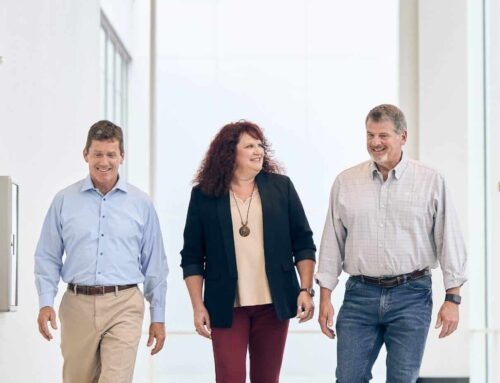Green building. One of those fancy construction buzzwords you’ve probably heard over the past several years. But does it actually make a difference? Does sustainable construction really end up saving you money and protecting our Earth over time? Below, we’ll discuss the potential financial and environmental outcomes of going green with a new build.
Cost-savings abound
When you hear “green building” or “sustainable construction” you’re probably thinking expensive solar panels or rooftop gardens. Which, in truth can be part of the green building discussion, but not necessarily a requirement. This eco-friendly approach to new construction can be surprisingly cost-friendly, especially when you consider the longevity of a newly constructed building.
First and foremost, the operational savings for a green building are above and beyond that of a traditional build. By selecting products and materials that are inherently sustainable and renewable in nature, you don’t have to worry about the upkeep nearly as much as a typical build. These long-term savings are in addition to the cost-cutting you’ll see in your energy and water bills from efficient heating, cooling, and gas.
Another way green building saves big? The potential for government incentives and tax credits. Meeting sustainability goals through a construction project can be incentivized in many instances, whether that’s through the Environmental Protection Agency (EPA) or another government program. And green construction projects focused on benefiting low-income individuals and communities can often find alternative funding options through the U.S. Department of Housing and Urban Development (HUD), for example.
For the longevity of our Earth
The facts are clear: sustainably constructed buildings require fewer resources such as water, carbon, and energy to be built and maintained. They also produce far less environmental waste than traditional construction practices. The U.S. Green Building Council (USGBC) has identified that LEED-certified buildings, or buildings constructed through green building best practices, could produce CO2 emissions at a 34% lower rate, consume 25% less energy, and 11% less water. These savings help prevent environmental waste and unnecessary hazards from poisoning our Earth, and we can all get behind that.
According to statistics collected by the EPA, buildings in the United States account for 39% of total energy usage, 12% of total water consumption, 68% of total electricity consumption, and 38% of carbon dioxide emissions. It’s clear investing in green building and sustainable construction practices can have a huge impact on all our lives in the long term. By maximizing our efforts in green construction and design, we can reap environmental benefits like conserving natural resources, reducing our contribution to unnecessary waste, and improve our air and water quality.
Can green construction practices really save money and our Earth? The short answer is yes. The more green buildings being constructed, the more savings, both financial and environmental, we can collectively harvest. At Catalyst, we’re dedicated to projects with an emphasis on reducing waste and protecting our environment (and in turn, your wallet). Contact us today to learn more about our sustainable construction practices and how we’ve been able to create green buildings in Milwaukee, WI (see: Ascent Project) and beyond.





